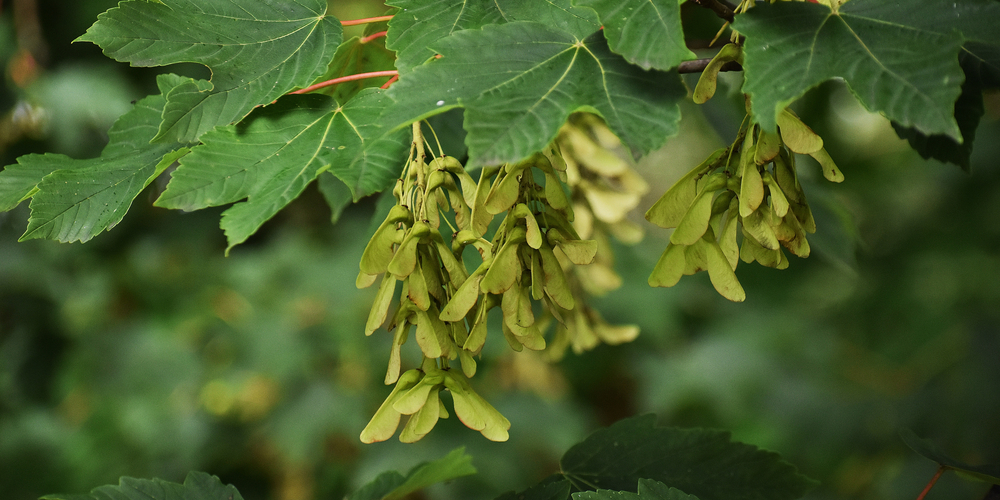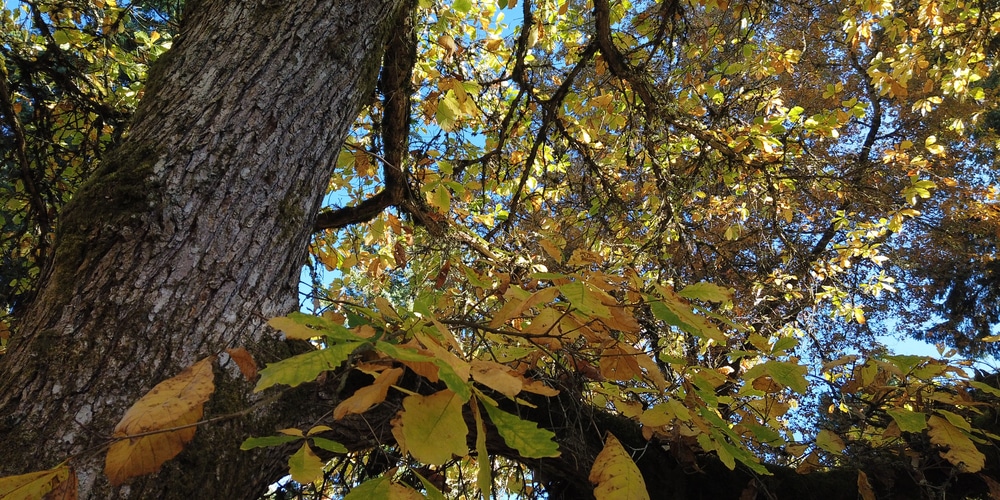Propeller seeds are fascinating seed specimens and provide a delightful experience for children and adults alike. If you have a tree in your yard and want to see this wonderful phenomena, you may wonder, ‘do oak trees have helicopters?’
Helicopters are commonly found in maple trees, sycamore, ash, elm and tree of heaven varieties. Oak trees may appear to have a helicopter shape in the way they grow but they do not produce helicopter seeds.
What are Helicopter Seeds?
Helicopter seeds are called as such as they flutter, spin and revolve in the air as they ripen and fall to the ground.
These curious seeds often go by different names, such as whirlybirds, maple copters, twisters and whirligigs, among others. Scientifically, they go by ‘Samara’, which is a dry fruit with papery wings.
The actual fruit is attached to a ‘wing’ that’s similar to a flat and thin membrane, which spins up and away from the parent tree.
Samaras or propeller seeds use the same aerodynamic effect as birds- a mini tornado puts air underneath the seed and lifts it up over great distances. They’ve been known to fly over a mile before falling to the ground (and hopefully germinate).
Do Oak Trees Have Propeller Seeds?
Oak comes in many different varieties and are suitable for yard or landscape use. However, if you want to plant one to experience fluttering and rotating seeds you might be in for disappointment.
The seeds oak trees produce are commonly known as acorns. Technically, it’s a nut that exhibits a cup-like structure you often see in animated movies. When ripe, the fruits fall to the ground and are collected by small animals such as squirrels, raccoons, mice, foxes and more.
4 Trees with Helicopters
Norway Maple
Norway Maple can grow in USDA zones 3 to 7 and make a huge statement in any landscape that can accommodate it.
The tree with propeller seeds works great in urban areas and can tolerate a degree of drought and shade. Since it grows big it’s best to reserve a significant amount of space when planting young. Norway Maple grows quickly and can provide a cool shade once it’s established.
Tree of Heaven
A helicopter tree with several interesting features, Tree of Heaven grows in zones 5 to 8 and can survive winters there. It sports large leaves that are similar to walnut trees and a smooth gray bark.
Tree of Heaven is native to China, and its helicopters have a high germination rate and spreads even in pavement cracks and barren soil.
Green Ash Tree
Green Ash Tree grows only in zones 8 and 9 and may have several pests that affect it greatly, but when it survives all that you’ll have a sturdy specimen that produces dozens of helicopters to delight viewers and guests alike (especially the female variety).
Plant Green Ash where it gets full sunlight and keep it healthy by fertilizing and watering during hot days and summer seasons.
Winged Elm
A deciduous tree that produces samaras in abundance, the Winged Elm grows only to around 40 to 50 feet. In open areas the tree does a rounded crown habit, while in crowded sites it grows taller and exhibits a straight form.
It’s hardy in zones 6 to 9 and produces striking red flowers in late winter.
Related Article: Growing Grass Under Oak Trees in Texas

